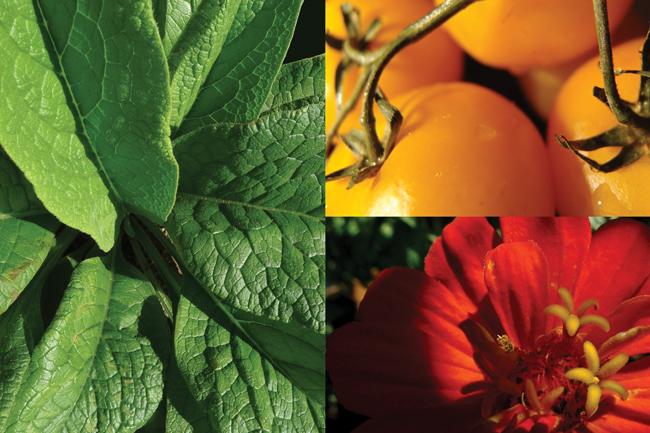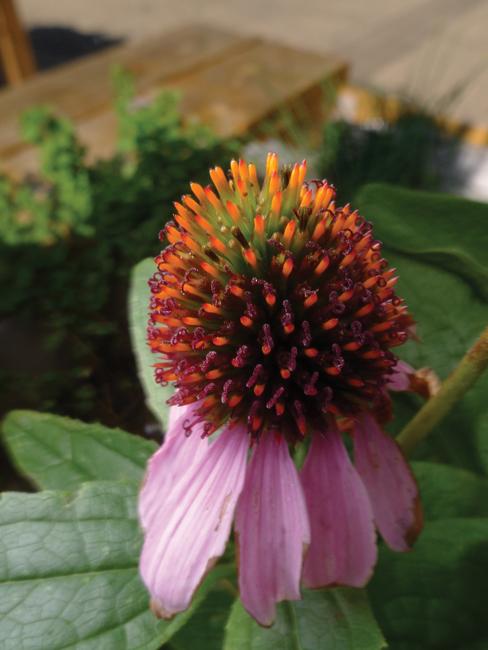Natural Selections
A yen for a tomato becomes grounds for a garden
- 3 minute read
- Feature

On a rectangle of cement tucked between the Francis A. Countway Library of Medicine and Huntington Avenue, a garden grows. Begun with a wish for vine-ripened tomatoes uttered by some of the Countway librarians during one of their “salad club” lunches, the garden now produces tomatoes, basil, chard, and other green-meal ingredients. But in keeping with the day jobs of the librarians and others who tend the patch, the garden is also advancing education and research by showcasing some of the herbs and flowers that have been used as medicines in the twentieth century.

“While we see the medicinal herb garden as a tool in the education of medical students, pharmacy students, and the public,” says Julia Whelan, a reference and education services librarian at the Countway and a natural medicines expert, “we also hope it will facilitate research into the role that natural pharmaceuticals have in the clinic today.” Whelan, Giordana Mecagni, an acquisitions archivist in the library’s Center for the History of Medicine, and Jessica Sedgwick, a project archivist for the Archives for Women in Medicine, helped author a successful proposal to the Harvard Office for Sustainability and, together with Wendy Brown, who oversees the garden’s care while also serving as the library’s access and reference assistant, are among the handful of library employees who have shepherded its development over the past four years.
According to Whelan, 20 to 60 percent of the U.S. population uses herbal dietary supplements on a regular basis, yet our knowledge of the effects of these supplements on human physiology remains limited. Physicians sometimes fail to ask about supplement use when taking patient histories. Even when doctors do ask, patients, concerned that such self-medication will be frowned upon, may downplay their use of herbals or omit mentioning them altogether.
There can be consequences to such omissions. The effectiveness and safety of medications given to patients who receive transplants can be compromised if those drugs are taken with certain herbals. Likewise, some of these medicines can interfere with the activity of prescription medications: garlic and vitamin E supplements can increase the action of anticoagulants, while St. John’s wort interacts with many medications including contraceptives; cyclosporine, an immune-system suppressant; digoxin; and antidepressants such as Paxil and Zoloft.

To spread knowledge of the physiological and medicinal effects of plants to those professionals who could directly benefit from it, the garden’s keepers are collaborating with educators at the Massachusetts College of Pharmacy and Health Sciences to bring information on herbal products to their students. To disseminate information on the power of plant-based supplements, Whelan and Brown have teamed up with Lana Dvorkin Camiel, a professor at the Mass College of Pharmacy, to produce podcasts on some of the medicinal herbs in the garden. Dvorkin Camiel also directs the college’s applied natural products programs and has been instrumental in helping the librarians design the Countway garden.
Finding space for this garden spot on the tightly packed Longwood campus was a challenge, but one overcome when the librarian–gardeners took a new look at something they saw every day. If their plans to bring to light the role of herbal pharmaceuticals go as hoped, the same might one day be said of a plant in a garden near you.
Ann Marie Menting is editor of Harvard Medicine magazine.